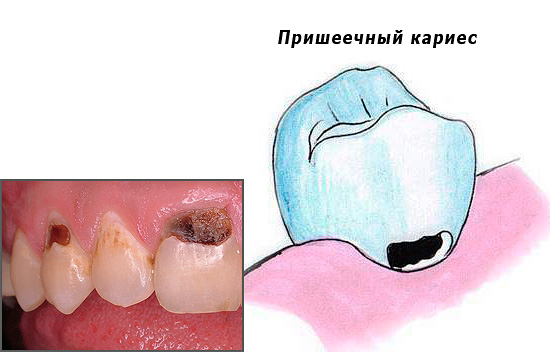
When the caries of the cervix occurs, many people instead of fleeing to the clinic as soon as possible to treat the tooth, all delay this undesirable moment. In part, this is due to various conflicting information on the network about the possibility of treatment of cervical caries even at home (with its initial forms), about the possibility of using remineralizing toothpastes and other available means that will supposedly help to restore tooth enamel effectively and thus relieve a person from Problems.
About where the truth is, and where the myth is, what methods of treatment of cervical caries are really effective and what can be done at home we will talk further. And also consider the mechanism of development of pathology and features associated with the localization of caries in the cervical area of the tooth.
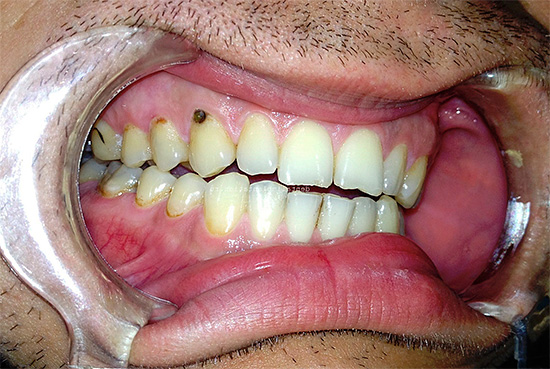
Features of the cervical caries and the characteristic clinical picture
Cervical caries appears, generally speaking, largely for the same reasons,as any other caries, and is associated with the vital activity of microorganisms that convert carbohydrates into organic acids. As a rule, the pathology is formed on the background of poor oral hygiene and without promptly started treatment, it progresses very quickly.
The lack of brushing skills formed from childhood and ignoring dental floss (starting from adolescence) results in the most caries-sensitive surfaces of the teeth, where plaque accumulates abundantly.
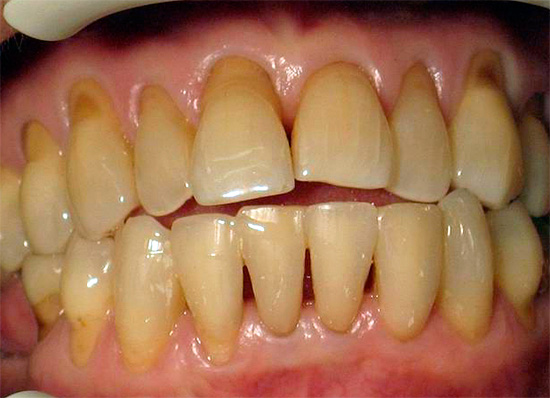
On a note
The microbial factor in the development of caries against the background of the use of products containing easily fermentable carbohydrates (mainly sucrose) was proved back in 1884 by Miller. This chemical parasitic theory of caries development with minor amendments has reached our days. Focal demineralization of the subsurface enamel layers begins under plaque as a result of the fermentation of carbohydrates by bacteria of the Streptococcus mutans species with the formation of various organic acids that “corrode” the enamel structure. At the same time, the mineral composition of the crystal lattice of enamel prisms is disturbed with the formation of so-called “micropores”, and this is visually manifested by the formation of, for example, cervical caries in the stain stage.

Most dentists are inclined to believe that cervical caries is a rather aggressive form of dental disease, which is due to several factors.
- The area affected by cervical caries has a small thickness of protective tissue, and often enamel is not sufficiently mineralized. A tooth consists of a crown, neck and root. The tooth neck is normally located under the edge of the gum, and the entire area near the neck edge is called “cervical". Selective caries lesion of this particular weak zone often implies active destruction of enamel and dentin, up to the pulp (“nerve”) with the rapid appearance of painful sensations disturbances characteristic of each stage. It is for this reason that the cervical caries without a timely treatment can in a short period turn into its complications: pulpitis, periodontitis, etc.
- Combined defects. The specificity of the localization and spread of lesions is that often cervical defects "crawl" across the entire cervical area, reaching the middle of the crown of the tooth, going under the gum or capturing contact surfaces with the transition to the so-called circular caries.In such cases, the tooth is engulfed in caries in a circle, which, without treatment, often leads to the breaking off of part or the entire crown.
The photo below shows an example of circular caries of milk teeth:
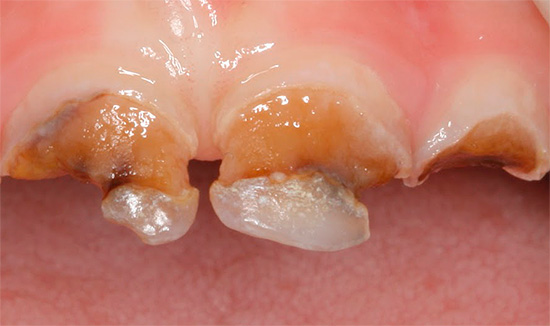
A feature of the cervical caries is also the fact that defects are often located in the "smile zone". If the areas of destruction are located on the side of the teeth, or on the inaccessible surfaces, then most often it does not cause serious aesthetic effects and worries, however, short-term pain from various stimuli and risks of caries in its complications without starting treatment are possible.
When the same cervical caries on the front teeth (especially in the "smile zone"), there are often serious psychological problems, including a nervous breakdown. This is especially true of people whose work is related to regular business contacts or public activities (journalists, artists, managers, teachers, doctors, etc.).

Symptoms of cervical caries can be very diverse, but they all fit into the general rule: the pain is always short-lived and quickly disappears after the removal of the stimulus.This aspect allows you to make the correct preliminary diagnosis and not to confuse with the complications of caries.
Cervical caries in the stain stage, as a rule, manifests itself only visually: a change in the color of the enamel in the cervical area: from a white spot to a pigmented one, depending on the activity of caries and options for its staining with food dyes. Sometimes there is a quickly passing sense of grind from chemical irritants (especially acidic). At this stage, treatment with conservative methods is possible, without a tooth preparing a drill.
Superficial cervical caries without timely treatment can cause a more diverse clinical picture with the development of pain from cold, hot and sweet, although sometimes it also develops asymptomatically.
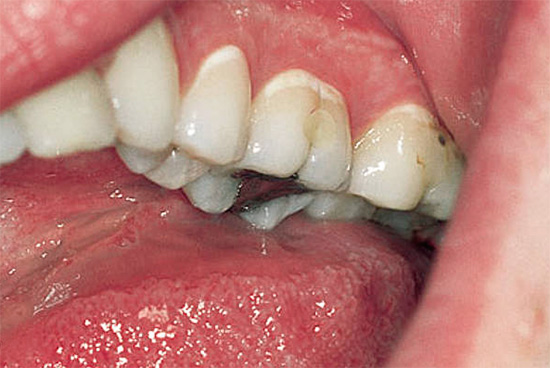
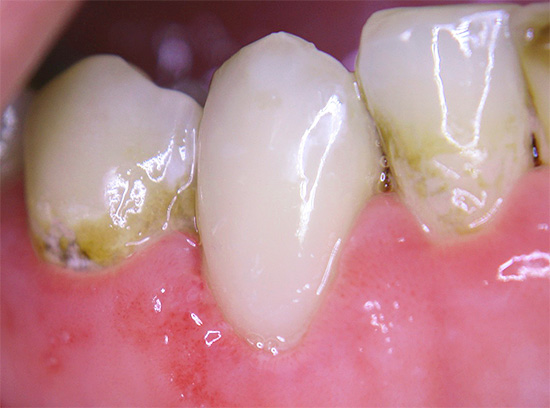
If you do not start treatment, then the next cervical caries from the surface form goes into medium and then deep. In this case, pain from chemical (sweet salty), temperature (cold and hot) and mechanical (with ingestion of solid food) irritants most often appear. It is worth emphasizing once again that all pains are short-lived and quickly disappear with the elimination of the causative factor causing them.
Feedback
When there was pain in the front tooth from cold water - at first I did not understand what was the matter. He looked in the mirror and was horrified: near the gums near the upper tooth there was a barely noticeable dark spot going under the gum. Went to a friend's dentist for treatment. He told me that this is a caries. The treatment took about 40 minutes, put a seal similar to the color of my tooth, now I drink cold water, as much as you want ...
Valery, Tambov
Treatment of cervical caries at home: reality or myth?
For many people, the very fact of the possibility of treatment of cervical caries at home allows you not to go to a dentist for professional help for a long time (for example, because of children's fears of terrible toothache during a drill). Well, The good news for such people is that certain home therapy is indeed meaningless.
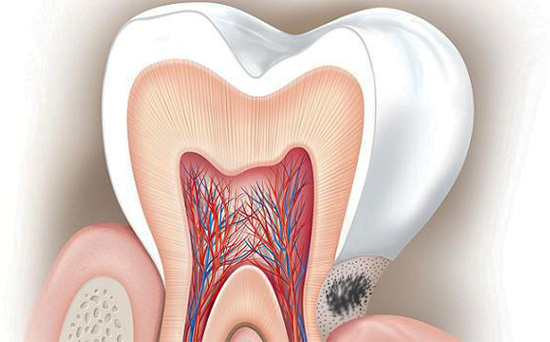
Cervical caries in the stains stage can be cured at home by using long-term hygiene products and preparations with elevated fluoride and calcium concentrations to saturate the weakened enamel crystal lattice in the zone of color change (contraindications are possible).You can, for example, use remineralizing gels, as well as special toothpastes from cervical caries.
However, this treatment should take into account some important points:
- Cervical caries and its characteristics are individual for each person: location, depth of lesion, area, structure of enamel, etc. Moreover, the carious process in the cervical area (s) often takes place against the background of various aggravating factors, which may include poor oral hygiene age, presence of other problems with teeth, general state of health. There is no guarantee that self selection remedies for the treatment of caries at home, it will take into account all the nuances not only of the oral cavity, but also of common, equally important characteristics that directly or indirectly determine the success of therapy.

- The range of products (preparations) for professional and home treatment and prevention of cervical caries is too diverse and wide. Again, there is no guarantee that the independent choice of one or another remedy will be so successful that it will not only solve the problem of treatment of cervical caries in the staining stage in a short time,but it will also not harm the general health and health of the teeth in high concentrations, for example, fluorides (which can be dangerous if they are used improperly).
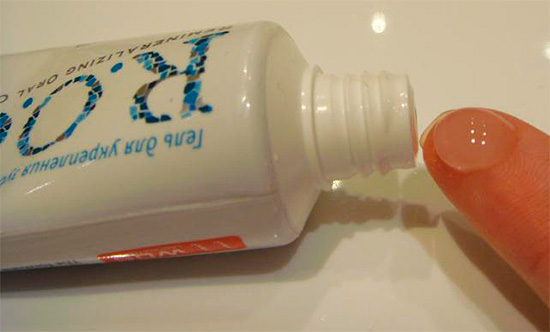
- It is possible to treat cervical caries with conservative methods only in the staining stage. And with what probability you can assume that your cervical defect is caries in the stains stage, and not superficial, medium or deep (or non-carious disease in general - enamel hypoplasia, fluorosis, wedge-shaped defect; or banal dental deposits - pigmented plaque or stone)?
From the experience of the dentist
Even a dentist at a professional reception to clarify the diagnosis carries out not only clinical diagnostics (survey, examination, probing), but also special research methods (staining stains with dyes, x-rays, EOM, transillumination, etc.). Sometimes it takes from 10-15 to 60 minutes. After all, the correct tactics for further treatment of cervical caries depends on the correct diagnosis.
Often, defects of deep-lying tissues (deep layers of enamel and dentin), as well as common complications of caries, such as pulpitis and periodontitis, are masked under the cervical caries.When pulpitis (or periodontitis) is detected, the treatment tactics is reduced to the treatment of the canal of the tooth with the elimination of the infectious process in it. Staging the seal in the cervical area without processing and sealing the canal (s) would soon lead to even more serious complications, including the loss of a tooth.
Popular folk remedies for the treatment of cervical caries
Cervical caries is often accompanied by painful sensations that may not last for a long time until their cause is eliminated: sweet, cold, hot - all this can cause pain of varying degrees of intensity. Sometimes it can cause a very strong pain during the meal, which is typical for deep cervical caries.
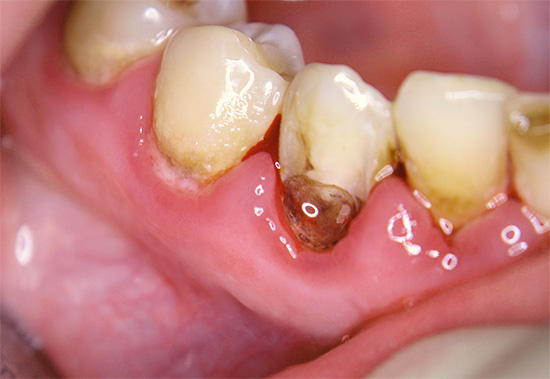
In folk medicine, there are many ways to temporarily get rid of pain, if admission to a doctor due to insuperable circumstances is postponed for a while.
Among the popular methods of treatment of caries folk remedies distinguish:
- Infusions for rinsing the mouth: sage, lemon balm, blueberries, blackberry leaves, mallow herb, knotweed herb, oregano;
- Broths for rinsing the mouth: from the bark of oak, aspen, tricolor violets, flowering branches of wormwood, valerian;
- Roots for chewing: angelicus, calamus;
- Propolis tincture for rinsing, previously diluted with water.
Popular recipe for pain with caries
One of the easiest folk remedies for getting rid of pains during caries is an infusion of sage. It is necessary to fill in 2 tablespoons of dry grass with half-liters of boiling water, then insist about 30 minutes in a closed container. It is necessary to strain the obtained product and rinse your mouth with a warm solution 4-5 times a day, mostly after meals. Your teeth will not restore it, but it will give an opportunity to hold out for some time until going to the dentist for a normal treatment.

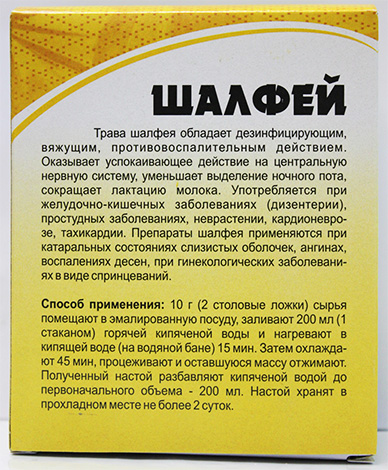
Relief of pain in caries after the use of folk remedies is temporary and can even mask serious problems, for example, the transition of cervical caries to pulpitis. Therefore, be careful and try to contact a specialist as soon as possible.
Features of sealing of gingival defects at the dentist
Cervical caries is one of the most difficult in the clinic for the treatment of carious lesions.
The easiest way to carry out the treatment of cervical caries in the stain stage is by a conservative method, that is, without the traumatic use of a drill and filling.The most common means are drugs for remineralizing therapy and deep fluoridation.
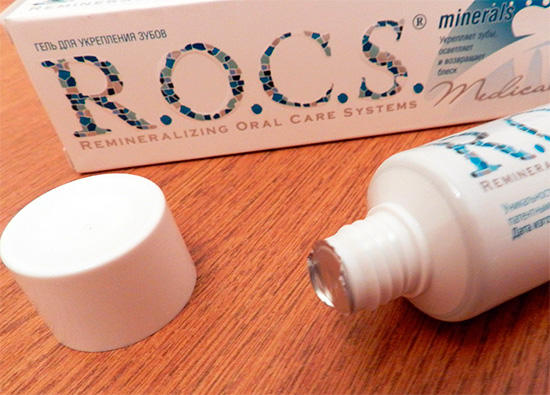
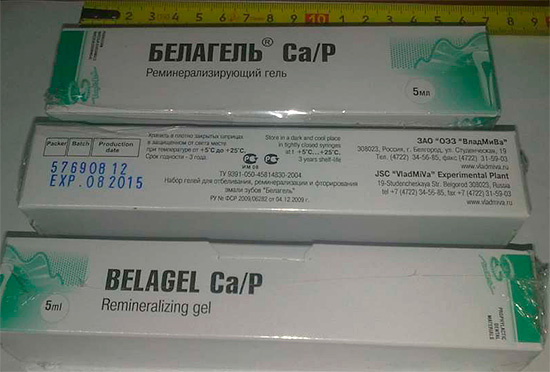
- Gluftored;
- Enamel-sealing liquid;
- Remineralizing gel R.O.C.S. for office use;
- Belagel Ca / P, Belagel F;
- Remodent;
- "Fluorodent";
- "GC Tooth Mouss".
And etc.
Treatment of cervical caries in the staining stage by the method of remineralizing therapy includes the following steps:
- Professional oral hygiene with cleansing of teeth from dental deposits (plaque, stone).
- Applying remineralizing gels or application of fluorine-containing preparations in 2-3 visits with the required intervals according to the instructions.
- Home use of drugs and hygiene products prescribed by the dentist to strengthen the enamel.
Despite the often good overview of the carious cavity for the doctor and the convenience of approaching it, the gingival arrangement presents many problems in the treatment of superficial, medium and deep cervical caries using mechanical cavity treatment, namely:
- inconvenient location of the cavity of the cervical defect for filling (especially when combined with subgingival caries);
- moisture ingress into the working field;
- penetration of blood from the inflamed or injured edge of the gums into the working field.
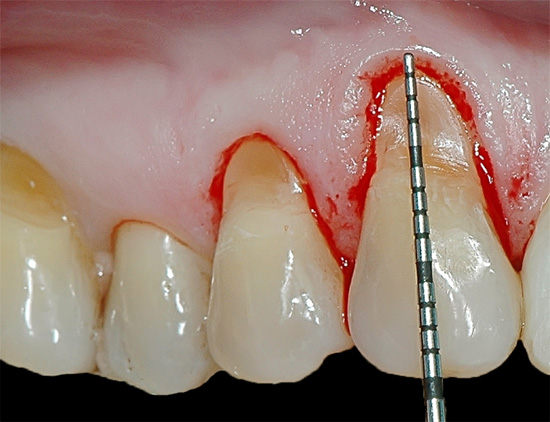
We list the basic principles of treatment of cervical caries using the methods of mechanical cleaning of the carious cavity and subsequent filling:
- Cleansing tooth surfaces from dental deposits;
- Insulation of the working field with coferdam (rabberdam) with good equipment of the clinic;
- Dissection of the cavity with water-air cooling with excision of carious and pigmented tissues;
- The formation of the cavity under the selected material for the filling;
- Installation of filling material in compliance with the technique of sealing;
- Correction seals: grinding, polishing.
Among the main modern materials for the treatment of cervical caries with filling, glass ionomer cements (JRC), light-cured composites, compomers and ormokers (organically modified ceramics) can be mentioned.
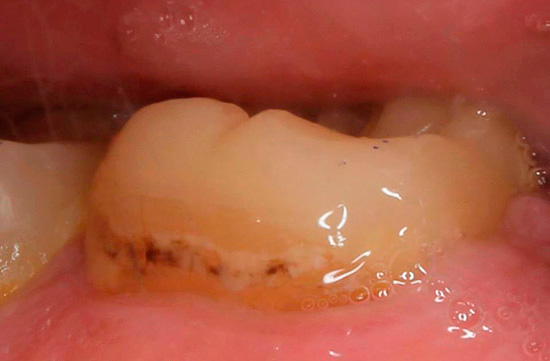
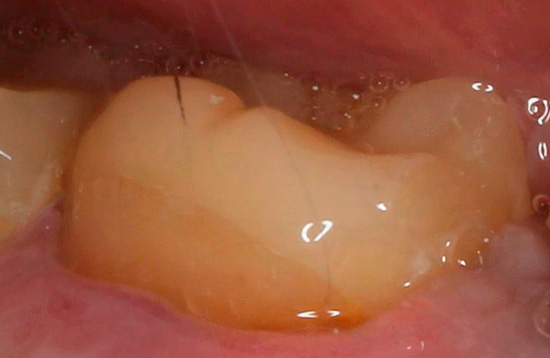
It is interesting
A prominent representative of the Ormoker is Admira. Ormockers are a group of restoration light-cured materials, or organically modified ceramics. They have high biocompatibility, are easier to model and give a lower shrinkage than the classic "light fillings",resistant to abrasion. Used for sealing defects of all classes, including for cervical caries.
Currently, combined technologies using 2-3 different materials are used to seal the cervical caries to maximize the positive properties of each and minimize negative effects. This makes it possible not only to cope with complex clinical situations associated with the gingival or subdesaeal localizations of cavities, but also allows you to return the aesthetic and functional parameters of the tooth, in other words - to maintain a beautiful tooth for many years.
The photo shows how the teeth look after the treatment of deep cervical caries:
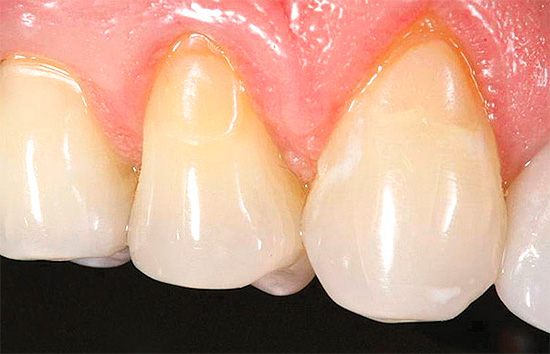
Prevention - the best protection against cervical caries
Prevention of cervical caries is many times better and more profitable than any treatment. However, most people either do not know its basics, or neglect the elementary rules that allow to protect teeth from the cervical caries, even for those who are inclined to develop this pathology.
If the mechanism of caries development has been known for more than a hundred years, then it is enough just to break the links leading to it, namely:
- To limit the use of easily fermentable carbohydrates with high cooking (sweets, flour products). This will not only adjust the diet in a useful way, but also reduce the risk of caries.
- Observe the culture of carbohydrate intake, if it is not possible to completely abandon them: in no case should they be eaten between the main meals, in large quantities and even more so at night without performing oral hygiene.
- Increase the consumption of coarse (solid) food, especially at the end of the meal. The alternation of solid fruits (apples) and vegetables (carrots) creates a procedure for self-cleaning the surfaces of teeth, which is not an innovation, but was the food culture of even the ancient Slavs.
- As a compulsory procedure after meals, you should brush your teeth. Brushing your teeth before breakfast is a practically useless procedure, as the plaque after eating begins to form during the first hours.
- Adjust dental brushing skills as soon as possible either at the dentist (hygienist) or with the help of an instructional video. The level of hygiene and the protection of teeth against cervical and any other caries depends on the correct observance of the cleansing techniques available for the brush surfaces.
- It is necessary to include dental floss (floss) in the list of hygienic procedures due to their high effectiveness against cervical caries that occurs on the contact surfaces between the teeth, which are not fully available for a toothbrush.
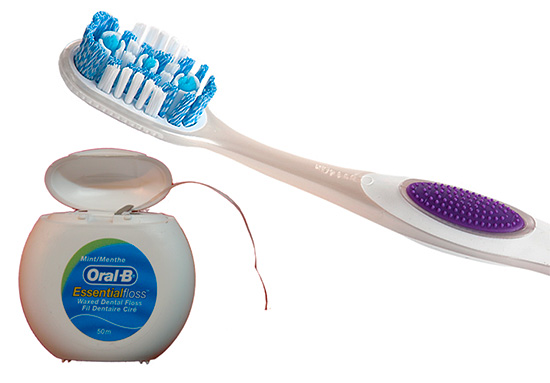
Special means protection against cariesthat can be applied at home:
- Toothpastes from cervical caries with fluoride concentration from 1000 to 1500 ppm;
- Dental floss soaked in fluoride;
- Conditioners with fluorine.
Most hygiene products to protect teeth from cervical and other types of caries that are available on the market (for example, toothpastes) are safe for teeth and general human health, but there are always risks. In each age group, depending on the cariogenic situation in the oral cavity, the structure of the tooth enamel, the level of hygiene, the number of fillings and teeth extracted, the concentration of fluoride in drinking water in a particular area, general health and the presence of associated pathologies, etc., an individual a set of tools for professional and home strengthening teeth and protection against cervical and other types of caries. It can be pastes, and gels, and solutions.
This is the correct systematic approach in the attitude of the dentist to the health of his patient. Therefore, if you are not sure of the correctness of your actions regarding prevention, you should contact a specialist for professional advice.
An interesting video about the features of the caries
Causes of caries and effective methods of protection against it


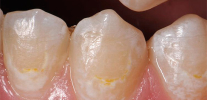
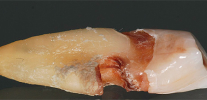
For some reason, several dentists did not advise me to touch this type of caries, because after the intervention of the drill increases the sensitivity of the tooth, do you agree with that? My cervical caries is already brown, another dentist recommends to put a seal, I think to agree ...
They say that in the cervical zone of the tooth no filling is held (except for fast-cracking cements)! They say it is better to immediately remove and insert the prosthesis.
I have cervical caries at the same stage. And everyone also says different things - who to believe? I am a disciplined patient: when the doctor says with conviction what to do, I do it. But when they themselves do not know ... But this problem did not appear yesterday, during which time they improved braces, crowns - everything, but the question with cervical caries doesn’t bother anyone: ((It is better to put implants!
Similarly, you say! How many did not go to the dentist, no one wanted to treat. IN TOTAL, deep caries that it is even too late to heal. It's a shame to tears!
I agree that it is more profitable for doctors loving money to tear out a tooth and insert a new one for money. A good doctor will do everything to save the tooth! And the clumsy and fillings are not worth it, and they are trying to do it all, and they don’t see any problems at all. Several doctors spoke about my cervical caries - enamel deformation, and only one doctor said that it was necessary to treat it.
Cervical caries is a consequence of bone tissue demineralization. In this case, the implant may not settle down. Refer to the endocrinologist, take a blood test for vitamin D, calcium, phosphorus, magnesium. I found a deficiency of vitamin D and magnesium. As soon as I began to replenish them, a cutting and wandering pain in the jaw area appeared in a week.
The dentist merely ascertained the fact of cervical caries sent to the periodontist. He confirmed and sent to the endocrinologist. Well, then it was described above.
I have the same problem. Doctors unequivocally say that they need to be treated, put a seal. As I did, I do not regret.
I also suffer from cervical caries. On 2 especially affected teeth I put fillings, which periodically fall off, because in such a place, by definition, they cannot hold on for long.The case is expensive, unpleasant, and not all dentists are able. I go many years to one doctor. A couple of times "changed" with other dentists, wanting to save. 1 time very well, and the second time such a stick, that look scary, and even fell off very quickly. I wrote an application for a refund for poor quality service. After receiving the money, she added and returned to her dentist. And yet, somehow at the reception elderly, very experienced doctor did not recommend to put the seal. He says, brush with a soft brush and gently handle.
When I had the first signs of this caries, the dentist in a private clinic said nothing so far. Now they tell me that time is lost, wear crowns, because fillings will fall out. That's how we are "treated."
The beginning of the article is strange: "People are delaying treatment." In the clinic for 10 years refused to treat cervical caries. I asked what to do, they answered: “nothing can be done”. When caries eaten up the floor of the tooth, she turned to a paid reception - for 1,700 rubles and sealed for 15 minutes. I would say right away that they are not cured by OMS, which is to completely refuse treatment and to harm health. Now another 2 teeth appeared, the same story - "nothing can be done."
The soft brush is very conducive to the recovery, after each meal with a small amount of toothpaste, brush your teeth, but only correctly! (top down)
Vasya, caries is not subject to recovery. The hole in the tooth will not heal from cleaning even with a soft, even hard brush. Unless you are a rat. Here rodents teeth grow all my life like hair. And people, alas, not so. If caries appeared, then only a filling will help him.
And I once cleaned Splat for the first time and realized that the paste was cool. I'm a smoking man. And between the two upper teeth, given that they are not perfectly positioned relative to each other, a plaque forms. If you do not follow this intensely, then the plaque becomes tartar. But Splat - he goes straight, whitening, white-silver, softens the stone so that in a couple of weeks I scraped it with a toothpick. And before that, I tried skinny scissors, although I know that it is impossible to overdo it with metal enamel. But I'm without fanaticism and stone.
In short, here is my advice: Splat “burns,” I realized this in 2012, bought it in Ukraine. This is to the fact that they can already fake, probably.Although the paste, like, ours! But now everything is exactly faced with tartar, but it's all smoke and ecology. If you can’t do anything with a habit, then try to smoke not on one side, in the middle, on the left side of the fangs, on the right, but it’s better to quit. As a result, the teeth suffer, and you along with them - both physically and aesthetically. Plus, eat calcium tablets. All nice beautiful smiles!
Thanks for the article, calmed down a bit. As it was in the video - quickly grew caries, discovered by chance. The trouble is that there is no tooth nearby - neither to remove, nor to put a crown, immediately grind everything and the bridge. There is a good doctor. She seemed to have done everything beautifully, but if before visiting her she was afraid of the kind of tooth, now sometimes the gums ache - “filling” on the neck (probably pressing) ... And began to react to the cold - but the doctor says that this is normal. As advised sometimes, deep fluoridation, or at home itself is dumb. Probably, the doctor herself did everything right. Here are just surprised that she said no flossing use, and irrigator.